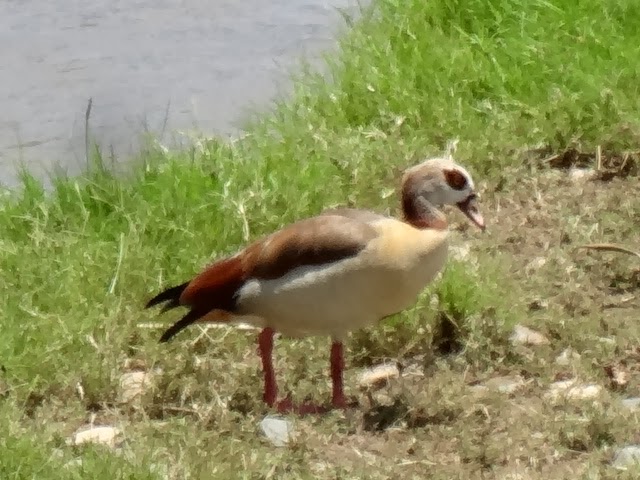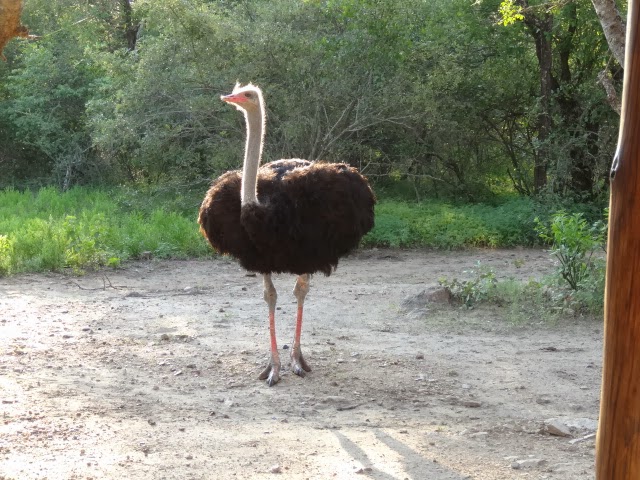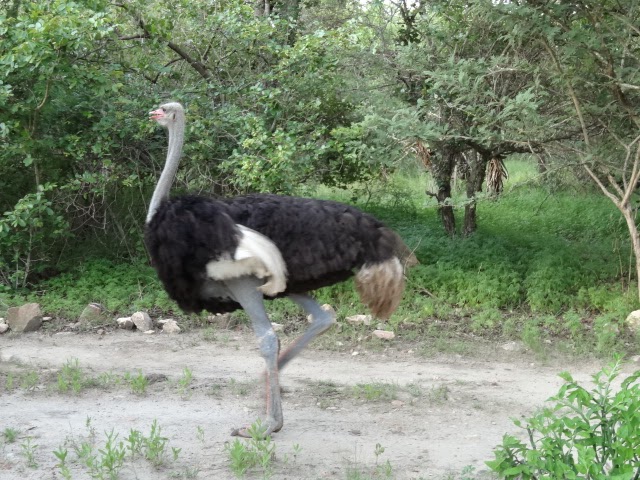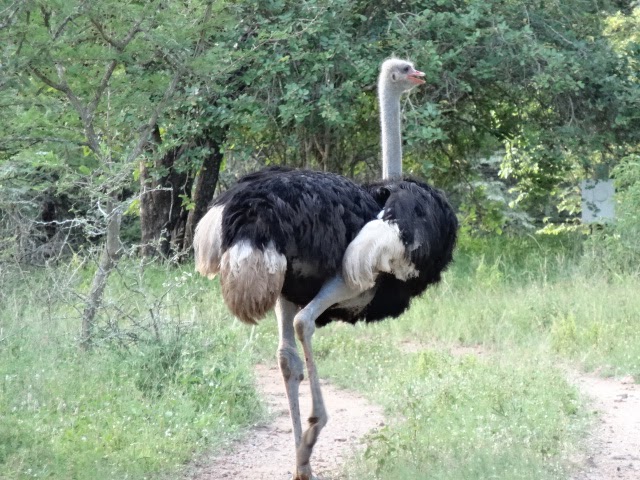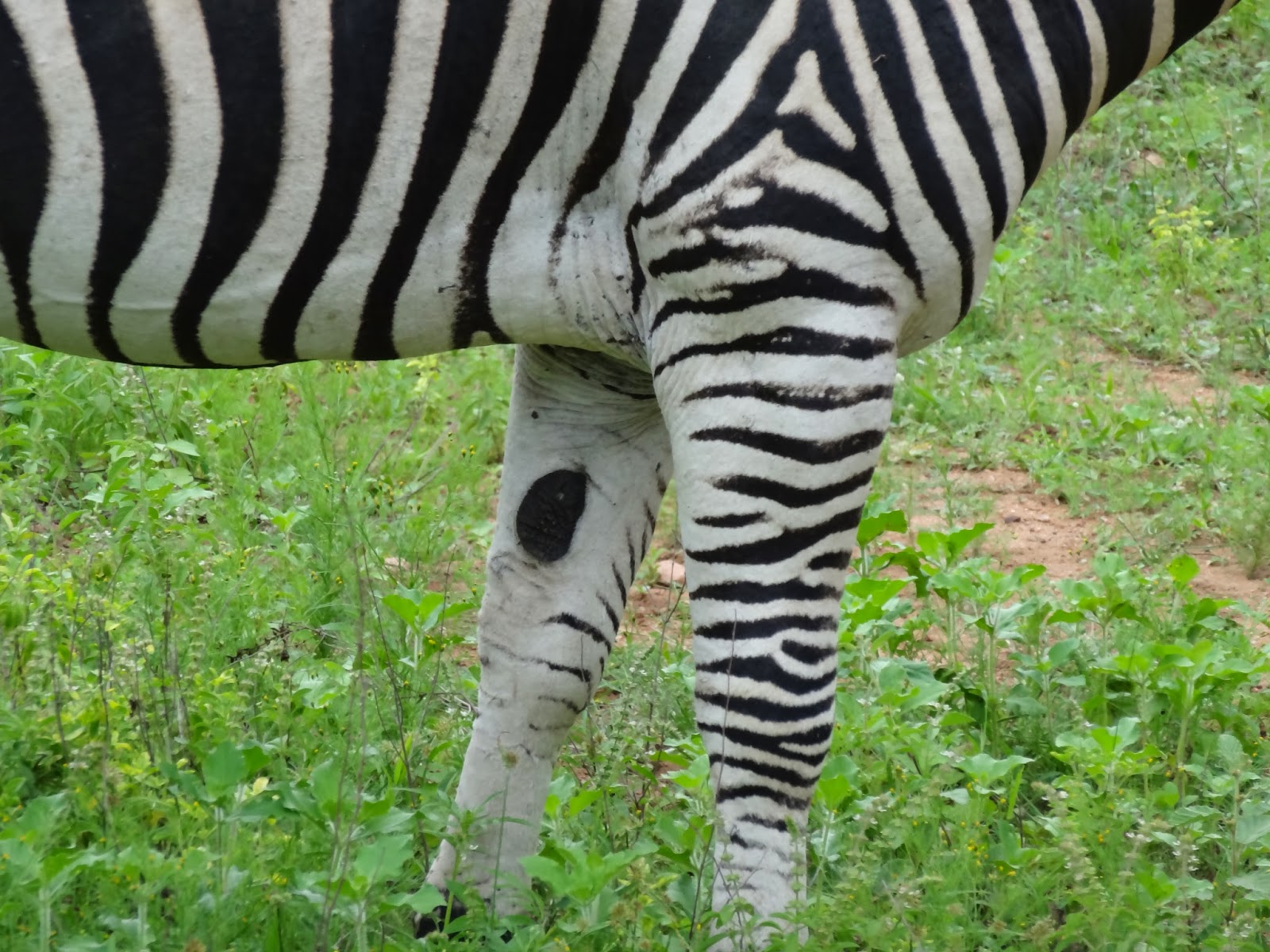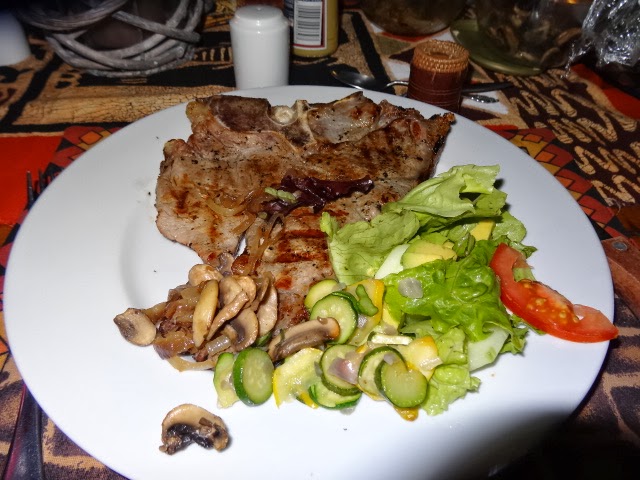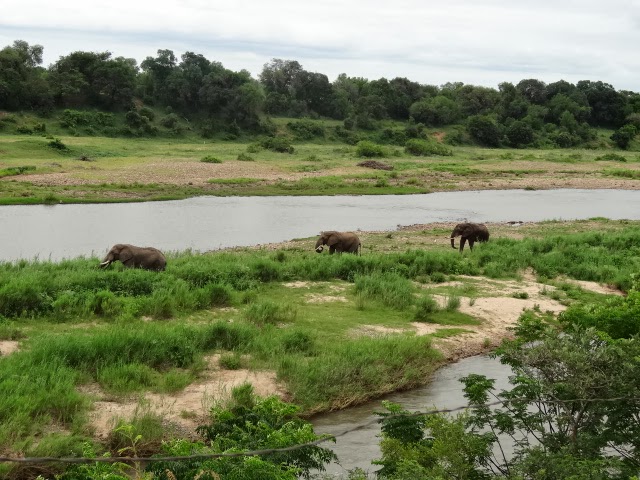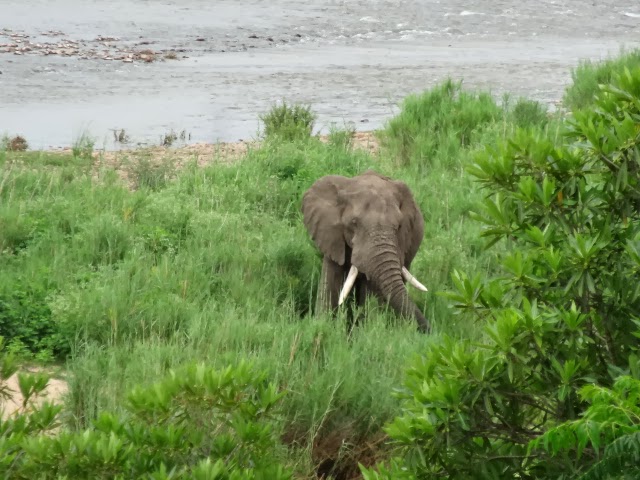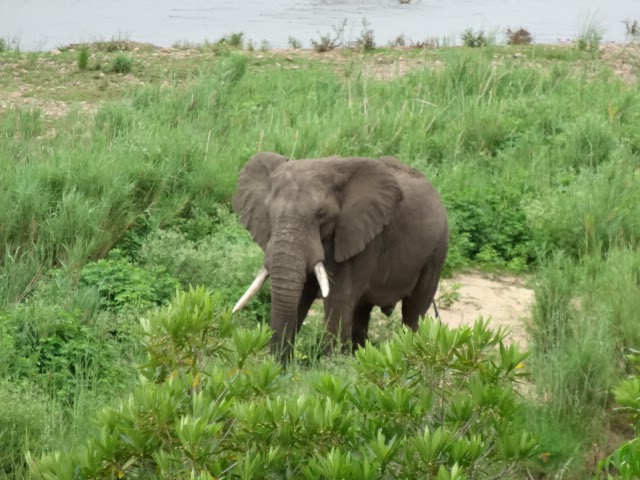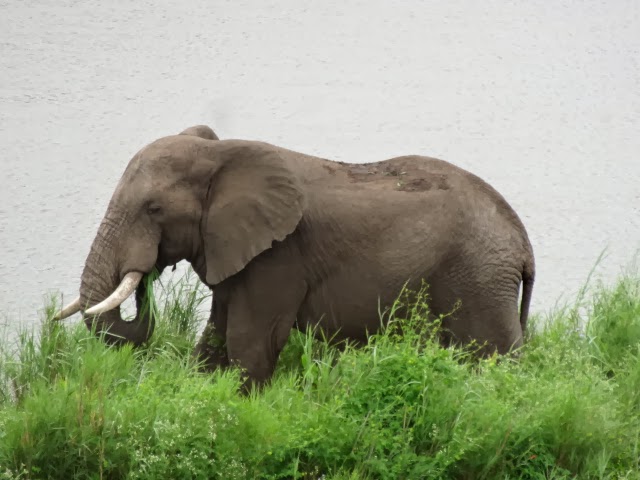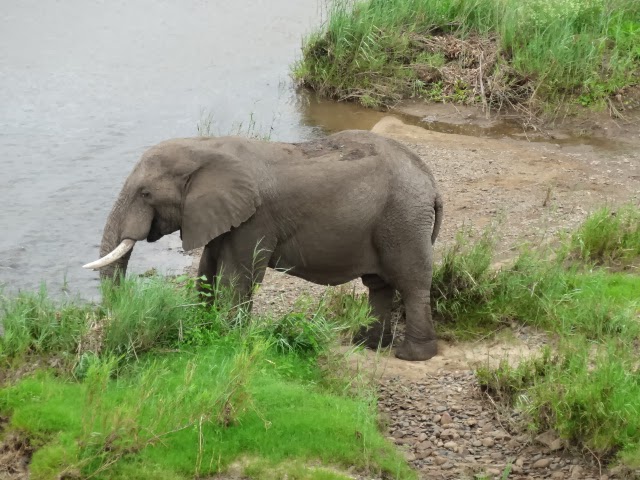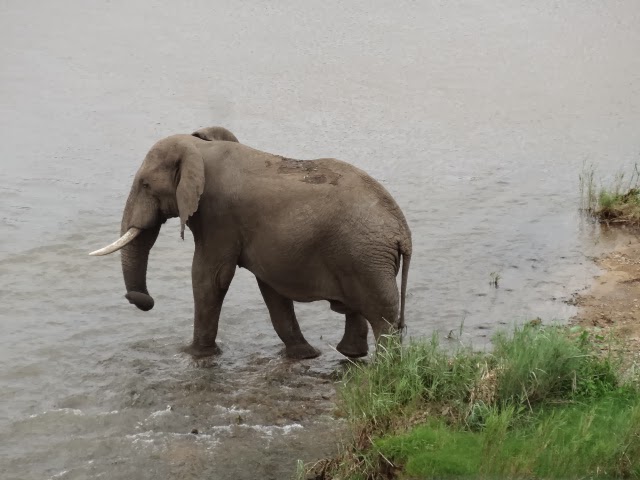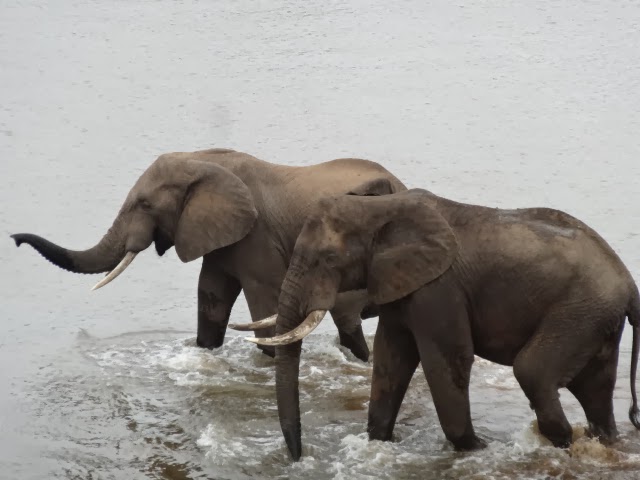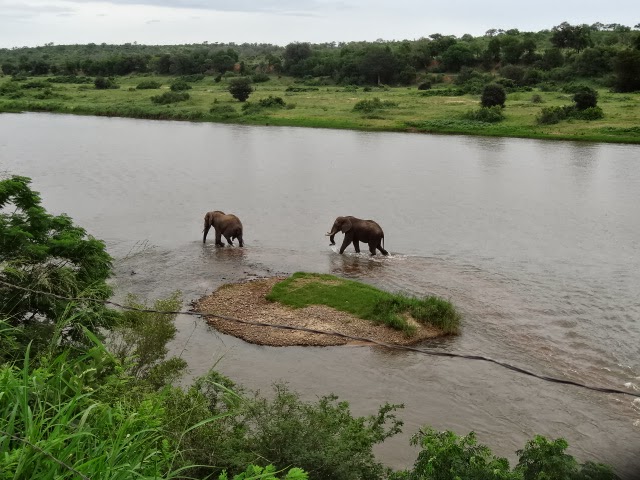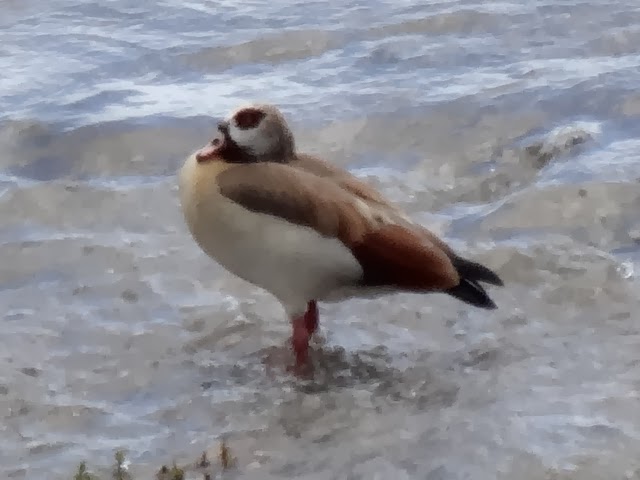 |
||
| After diligent perusal of the book, “Newman’s Birds by Colour for South Africa”, loaned to us by Louise, we were thrilled to spot the White Fronted Plover that we’d captured from the banks of the Crocodile River.
This morning at 8:00 am, Danie stopped by on his motorbike to say hello and to tell us that a male Lion was spotted by a ranger at 3:00 am close to the river. Danie told us that from time to time lions make their way from the bordering Kruger National Park into Marloth Park, protected only be a few stands of wire fence.
Danie explained that a visiting lion may stay in Marloth Park for months at a time, spotted on occasion, mostly at night. Residents are always alerted to the presence of a lion.This further explains why residents are not permitted to go for a walk after dark along with the danger of other nocturnal animals.
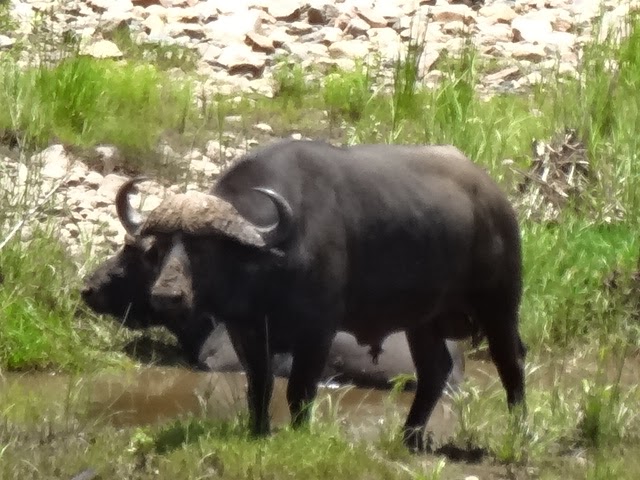 A male cape buffalo, referred to as “Retired Generals” by our guide Anderson in the Masai Mara.
 A lone bird hangs out with the two “Retired Generals.”
The intent has been to keep elephants, rhinos, lions, and hippos form entering Marloth Park, potentially harming its residents. Located in Marloth Park is a smaller park, Lionspruit, containing all the wildlife we see here, plus three Lions, one male, and two females. We intend to visit Lionspruit soon, staying away during the busy holiday season, now finally winding down. It’s unlikely that we’ll see the Lions in Lionspruit as explained by many of the locals we’ve met. Lions tend to sleep during the day and hunt at night
 Hippos spend most of their time in the water, occasionally languishing in the sun in groups. Crocodiles and hippos co-habitat well.
 During our second river visit, we spotted this hippo snorting water as shown in the photo as the sun went down.
|
With the abundant wildlife and vegetation on the Crocodile River, forbidden to human exploration other than viewing from its banks, dividing Kruger National Park and Marloth Park, it is a draw for us on a regular basis.

Midday yesterday, we took a long drive along the road that borders the river, stopping to look for several openings in the bush and trees, in the same area where the Lion was spotted during the night.
 |
| The interesting white bulls-eye on the waterbuck’s behind. |
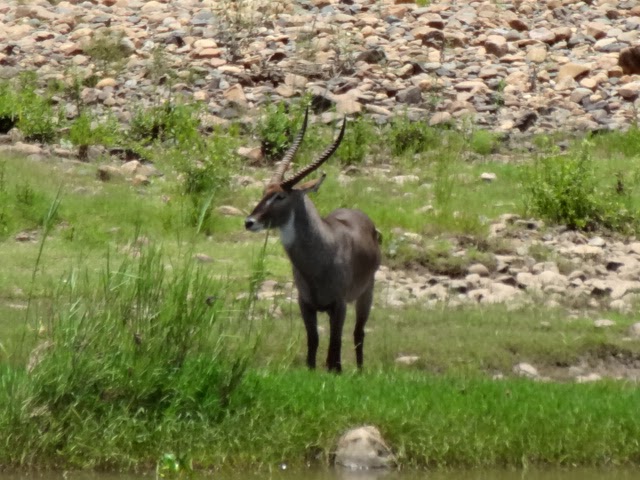 |
| The waterbuck is an attractive animal staying close to the river for their food sources. |
Later in the day, we returned to the public campgrounds to once again view the river and, to grab dinner-to-go from their popular overlook restaurant.
 |
| This crocodile was far across the river, making it difficult to get a good shot. |
In the past 15 months, we haven’t purchased any carry-out-dinners, due to a lack of availability, along with the restrictions of my way of eating. With several recommendations to try the grilled chicken, we decided to make our usual coleslaw and two vegetable sides to round out the meal and eat in, the third night in a row.
 |
| The views of the river never disappoint. |
We placed our order for two whole chickens after seeing guests carrying them to the picnic tables. While our chickens were cooking, we sat outside on the deck checking out the wildlife along the river. Once again, we weren’t disappointed, as shown in our photos.
Based on the fact that chickens in this area are free-range, not receiving any hormones or other drugs in order to grow meatier, the chickens were small and had little meat although the flavor was good. It wasn’t difficult to wipe out almost all of the two chickens in one meal.
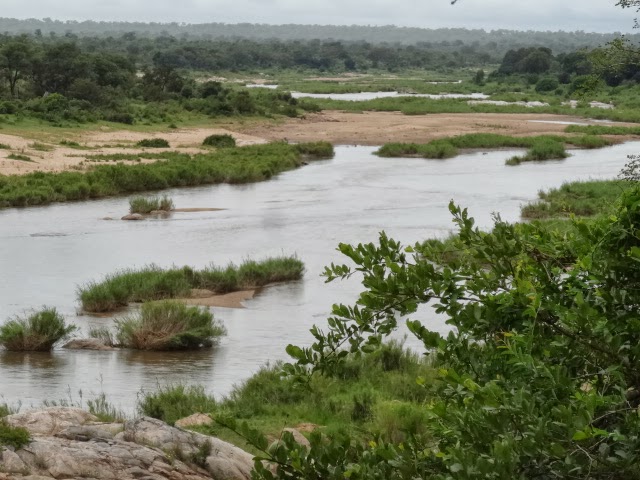 |
| Even on a cloudy day, the river views are breathtaking. |
Tonight, we’ll dine at Ngwenya, a resort outside Marloth Park, which is also located on the river with what we’ve heard is a phenomenal close-up viewing. Hopefully, we’ll return with more photos to share.
Wherever we drive, walk, or even stay stationary, if patience prevails, “they will come.” Yesterday, we had another extraordinary day with two visits to the Crocodile River and visitors galore.
Tomorrow, we’ll have an entertaining video to share epitomizing what we keep saying every day, “In many ways, the animals are a lot like us!” It is these similarities that make us smile and laugh again and again, often hours later, when we relive the wonderful events of the day.
 |
| As the sun began to set over the Crocodile River, we packed up our dinner-to-go and headed home having had yet another great day of viewing. |
There are few recreational activities that bring so much anticipation, laughter, and joy as that which we’ve experienced here in the bush, living among the treasures that Mother Nature has graciously bestowed upon us humans, to nurture, to love, to protect, and respect.


